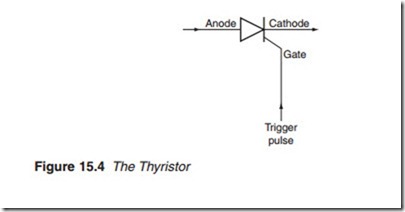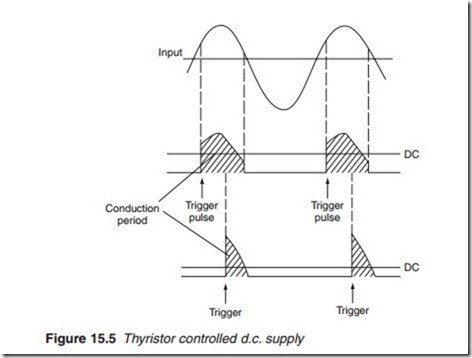Thyristor-controlled rectifier
An alternative to the transistor, a thyristor (Figure 15.4) may be used as the regulating device for a power supply. A thyristor is triggered into conduc- tion by a positive voltage applied to its gate, provided that its anode is
positive with respect to the cathode. When fed with an a.c. voltage, the thyristor can only conduct during the positive half cycle. The conduction period is determined by the timing of the trigger pulse to the gate. The output level may thus be controlled by switching the thyristor for longer or shorter periods of time as shown in Figure 15.5.
Related posts:
VIDEO DISC TECHNOLOGY:SPEED-CORRECTION SERVOS.
SATELLITE TELEVISION:DIGITAL RADIO SYSTEMS.
Liquid crystal display (LCD):Greyscale and colour generation
Television fundamentals:Scanning and Interlacing
Digital recording and camcorder:Digital-8 format and D-8 recording system.
VIDEORECORDER DECK CONTROL:SYSCON INPUTS.
Television receivers and colour processing:Colour decoding
Plasma panels:Dynamic brightness control
TIMEBASE SERVICING
TELETEXT RECEPTION:TELETEXT RECEPTION.
Digital recording and camcorder:Burst cutting area and Write strategies
TAPE DECK MECHANICS AND SERVICING:VIDEO HEAD DRUM.
The digital TV reception:Testing the digital TV decoder box and Aerials and dishes.
Video re-production:Overview
Cable and on-line television:Cable and on-line television and Cable types

